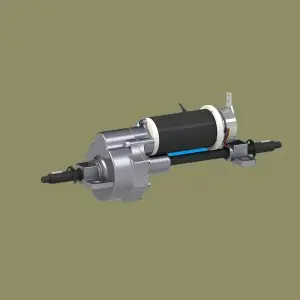If you own a Toyota Highlander, you know it is a reliable and versatile SUV that can handle a variety of driving conditions. However, like any vehicle, it requires regular maintenance to keep it running smoothly. An important aspect of maintenance is changing the transaxle oil, which is critical to the smooth operation of your Highlander transmission.
The transaxle is an integral part of a vehicle’s drivetrain that combines the functions of the transmission, axle and differential into a single integrated unit. The transaxle uses transmission fluid to lubricate its moving parts and ensure smooth transfer of power from the engine to the wheels. Over time, this fluid can break down and become contaminated, causing potential transmission issues if not properly maintained.
So, how often should you change your Highlander’s transaxle oil? Toyota recommends following the maintenance schedule outlined in the owner’s manual, which typically recommends changing the transaxle oil every 60,000 to 100,000 miles. However, consideration must be given to the driving conditions the vehicle will be exposed to and any strenuous towing or hauling activities as these may affect the lifespan of the fluid.
If you frequently drive in stop-and-go traffic, tow heavy loads, or drive in extreme temperatures, it’s a good idea to change your transaxle fluid more frequently, even if you haven’t reached the recommended mileage intervals yet. This extra care can help extend the life of your Highlander transaxle and prevent potential transmission problems down the road.
When changing the transaxle fluid in your Highlander, you must use the correct type of fluid for your specific model year. Toyota recommends the use of genuine Toyota ATF WS (Automatic Transmission Fluid World Standard) for most Highlander models as it is specifically formulated to meet the needs of Toyota transmissions. Using the wrong type of fluid can cause performance issues, so it’s important to follow the manufacturer’s recommendations.
Changing the transaxle oil in your Highlander is a relatively simple process, but proper procedures must be followed to ensure it’s done correctly. Before you begin, you must make sure your Highlander is on level ground and the engine is at operating temperature. This helps ensure that fluid drains properly and you get an accurate reading when refilling.
First, you need to find the transaxle dipstick, which is usually located near the back of the engine compartment. Once you find the dipstick, remove it and use a clean cloth to wipe off any old fluid. Then, reinsert the dipstick and remove it again to check the level and condition of the oil. If the fluid is black or has a burning smell, it’s time to replace it.
To drain the old fluid, you’ll need to locate the transaxle fluid drain plug, which is usually located at the bottom of the transaxle case. Place the drain pan under the stopper and carefully remove it to allow the old fluid to drain completely. After all the old fluid has drained out, reinstall the drain plug and tighten to manufacturer’s specifications.
Next, you need to locate the transaxle fluid fill plug, which is usually located on the side of the transaxle case. Using a funnel, carefully pour new transaxle fluid into the fill hole until you reach the proper level indicated by the dipstick. Be sure to use the correct type and amount of fluid specified in your owner’s manual to prevent over- or underfilling the transaxle.
After you have filled the transaxle with new oil, reinstall the fill plug and tighten to the manufacturer’s specifications. After completing a fluid change, it’s a good idea to take your Highlander for a short drive to make sure the new fluid is circulating properly and the transmission is functioning properly.
In summary, changing your Toyota Highlander’s transaxle oil is an important part of regular maintenance to ensure the longevity and performance of your vehicle’s transmission. By following the manufacturer’s recommendations and considering your driving conditions, you can help prevent potential transmission problems and keep your Highlander running smoothly for years to come. Properly maintaining your vehicle is key to enjoying the reliability and versatility your Highlander enjoys for miles on the road.
Post time: Jan-05-2024


